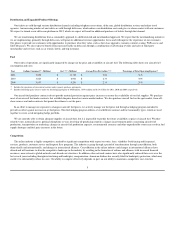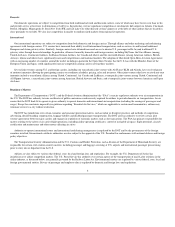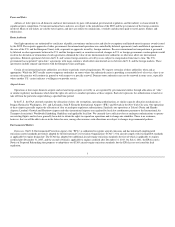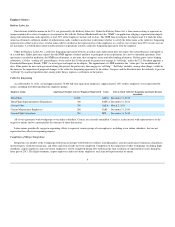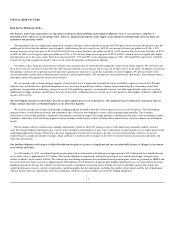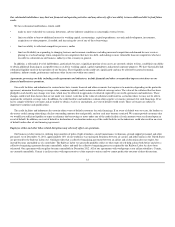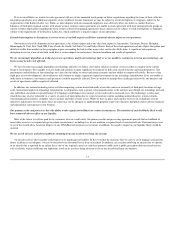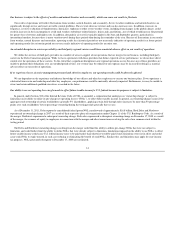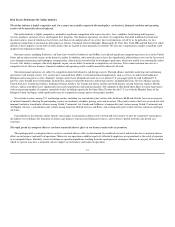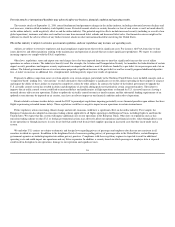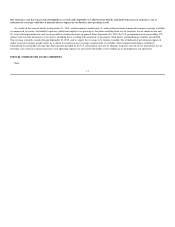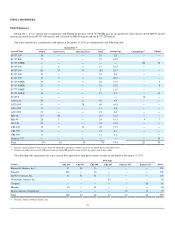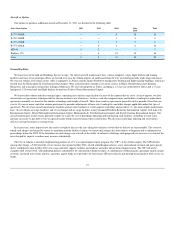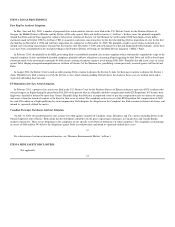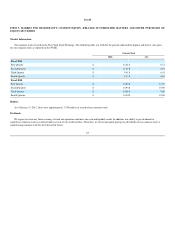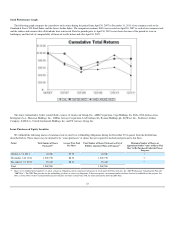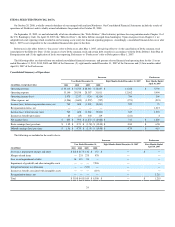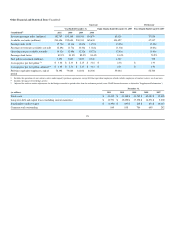Delta Airlines 2011 Annual Report Download - page 21
Download and view the complete annual report
Please find page 21 of the 2011 Delta Airlines annual report below. You can navigate through the pages in the report by either clicking on the pages listed below, or by using the keyword search tool below to find specific information within the annual report.
Risk Factors Relating to the Airline Industry
The airline industry is highly competitive and, if we cannot successfully compete in the marketplace, our business, financial condition and operating
results will be materially adversely affected.
The airline industry is highly competitive, marked by significant competition with respect to routes, fares, schedules (both timing and frequency),
services, products, customer service and frequent flyer programs. Our domestic operations are subject to competition from both traditional network and
discount carriers, some of which may have lower costs than we do and provide service at low fares to destinations served by us. In particular, we face
significant competition at our domestic hub airports in Atlanta, Cincinnati, Detroit, Memphis, Minneapolis-St. Paul, New York-JFK and Salt Lake City either
directly at those airports or at the hubs of other airlines that are located in close proximity to our hubs. We also face competition in smaller to medium-sized
markets from regional jet operators.
Discount carriers, including Southwest, AirTran (now owned by Southwest) and JetBlue, have placed significant competitive pressure on us in the United
States and on other network carriers in the domestic market. In addition, other network carriers have also significantly reduced their costs over the last several
years through restructuring and bankruptcy reorganization. American has recently filed for bankruptcy protection, which may enable it to substantially reduce
its costs. Our ability to compete effectively depends, in part, on our ability to maintain a competitive cost structure. If we cannot maintain our costs at a
competitive level, then our business, financial condition and operating results could be materially adversely affected.
Our international operations are subject to competition from both domestic and foreign carriers. Through alliance and other marketing and codesharing
agreements with foreign carriers, U.S. carriers have increased their ability to sell international transportation, such as services to and beyond traditional
European and Asian gateway cities. Similarly, foreign carriers have obtained increased access to interior U.S. passenger traffic beyond traditional U.S.
gateway cities through these relationships. In particular, alliances formed by domestic and foreign carriers, including SkyTeam, the Star Alliance (among
United Air Lines, Continental Airlines, Lufthansa German Airlines, Air Canada and others) and the oneworld alliance (among American Airlines, British
Airways, Qantas and others) have significantly increased competition in international markets. The adoption of liberalized Open Skies Aviation Agreements
with an increasing number of countries around the world, including in particular the Open Skies Treaties that the U.S. has with the Member States of the
European Union and Japan, could significantly increase competition among carriers serving those markets.
Several joint ventures among U.S. and foreign carriers, including our transatlantic joint venture with Air France-KLM and Alitalia, have received grants
of antitrust immunity allowing the participating carriers to coordinate schedules, pricing, sales and inventory. Other joint ventures that have received anti-trust
immunity include a transatlantic alliance among United, Continental, Air Canada and Lufthansa, a transpacific joint venture among United, Continental and
All Nippon Airways, a transatlantic joint venture among American, British Airways and Iberia, and a transpacific joint venture between American and Japan
Air Lines.
Consolidation in the domestic airline industry and changes in international alliances have altered and will continue to alter the competitive landscape in
the industry by resulting in the formation of airlines and alliances with increased financial resources, more extensive global networks and altered cost
structures.
The rapid spread of contagious illnesses can have a material adverse effect on our business and results of operations.
The rapid spread of a contagious illness can have a material adverse effect on the demand for worldwide air travel and therefore have a material adverse
effect on our business and results of operations. Moreover, our operations could be negatively affected if employees are quarantined as the result of exposure
to a contagious illness. Similarly, travel restrictions or operational problems resulting from the rapid spread of contagious illnesses in any part of the world in
which we operate may have a materially adverse impact on our business and results of operations.
15


